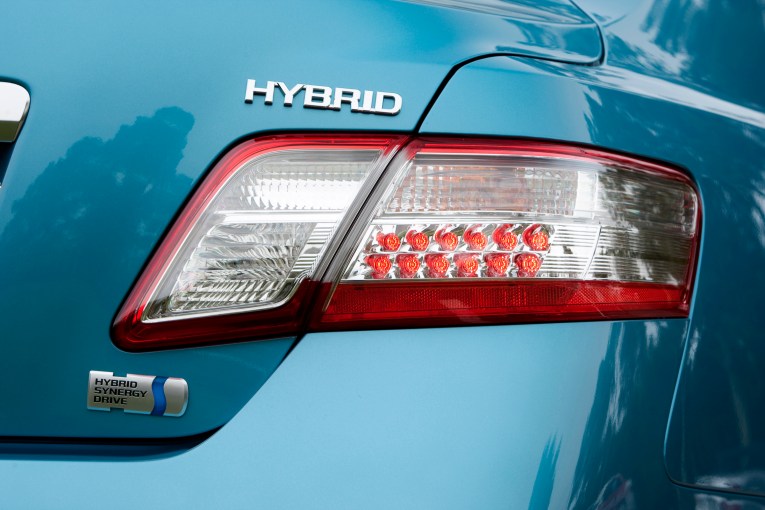Lifting the minimum wage is anything but reckless – it’s what low earners need

Banks are in the spotlight for the rates of interest they pay to savers.
Stand by for something “reckless and dangerous”.
That’s what former prime minister Scott Morrison said Prime Minister Anthony Albanese would be if he asked the Fair Work Commission to grant a wage rise big enough to cover inflation. It would make Albanese a “loose unit” on the economy.
Yet Albanese and his industrial relations spokesman Tony Burke are preparing to do just that ahead of the commission’s deadline of June 7, in time for the increase to take effect on July 1.
The increase would amount to a dollar an hour, lifting Australia’s minimum wage from $20.33 an hour to $21.36. New Zealand has just lifted its minimum from $NZ20 to $NZ21.20.
Despite what Morrison and his team said in the campaign about previous governments avoiding recommending specific recommendations, Morrison’s predecessors Fraser, Hawke and Howard did it for years, and state governments are still doing it.
Back in March, when Australia’s official inflation rate was 3.5 per cent, before it had climbed to 5.1 per cent, Victoria recommended 3.5 per cent.
And the government of which Morrison was a part wasn’t shy about telling employers what to pay.
In 2014 its employment minister Eric Abetz counselled “weak-kneed” employers against “caving in” to union demands, setting off a “wages explosion”.
Of course, there’s no guarantee that the Fair Work Commission will heed the new government’s push for a $1 an hour increase.
The commission is perfectly capable of determining what wage rises to grant, after taking into account all submissions. In all but one of the past 10 years it has granted more than the prevailing rate of inflation at the time.
Whether it will do that again remains to be seen next month. But to get ahead of that announcement, here’s how the commission explained its thinking in its most recent decision in June last year.
Most workers aren’t on awards
In ruling on a minimum-wage increase, what matters most to the commission is employers’ ability to pay (the profits share of national income had climbed during five years in which the wages share had shrunk) and the living standards of Australia’s lowest paid.
Only the lowest paid 2 per cent of workers get the national minimum wage, and a further 23 per cent get the minimum award rates the commission adjusts at the same time.
Last year, the commission found some households on the minimum wage had disposable incomes below the poverty line, and it was reluctant to see them fall further.
It was also reluctant to grant a flat dollar increase that would boost the position of low earners relative to higher earners, saying past flat dollar increases “compressed award relativities and reduced the gains from skill acquisition”.
A percentage rather than a flat increase would particularly benefit women, because, at higher levels, women were “substantially more likely than men to be paid the minimum award rate” and less likely to be paid via contract or an enterprise bargain.
In deciding what percentage increase to award, it gave considerable weight to the most recent increase in the consumer price index (CPI). Right now, that’s 5.1 per cent.
The commission dismissed suggestions, put forward again in the context of the latest 5.1 per cent increase in the CPI, that it should use the separately calculated “employee living cost” index, which has come in at 3.8 per cent.
The employee living cost index has been climbing by less than the CPI because it includes mortgage rates, which have been falling, whereas the CPI does not.
Low earners aren’t mortgagees
The commission made the point that low-paid workers were less likely to own a home than higher-paid workers, making the CPI a better measure for them.
But not a perfect measure. The Australian Bureau of Statistics has begun dividing the CPI into “discretionary” (non-essential) purchases and other, essential, purchases.
The commission says low-income households spend more of their income on essentials than higher-earning households, making “non-discretionary” inflation especially relevant. Non-discretionary inflation is running at 6.6 per cent.
The commission rejected suggestions the increase it proposed could push Australians out of work or make it harder for young Australians to find work.
Which isn’t to say that couldn’t happen. During the 1970s and 1980s high wage growth fed both high inflation and high unemployment, so-called stagflation.
Wages aren’t destroying jobs
But back in the 1970s and 1980s, wages were climbing faster than the combination of price growth and productivity growth, making increases hard for employers to pay.
Of late, the profits share of national income has been climbing rather than falling, giving employers an increasing ability to pay.
And whereas back then most workers were paid via the awards set by the commission, today most are paid via enterprise agreements negotiated firm by firm, meaning increases in awards only flow through to workers on agreements to the extent that they and employers are able to agree on them.
And what the government is proposing is not an increase markedly greater than inflation of the kind that fed stagflation though the 1970s and early 1980s, but an increase in line with prices – even though employers might be able to pay more.
If what the government is proposing strikes the commission as reckless or dangerous, it will reject it.
The increases it has granted to date have added to neither unemployment nor (particularly) to overall wages growth.
Low earners versus home owners
The commission will certainly reject any suggestion that it ignore the next increase in compulsory superannuation contributions, due to lift employers’ contributions from 10 per cent of salary to 10.5 per cent in July.
The contributions are a cost to employers and a benefit to employees. It has taken them into account in the past.
And it should reject, as repugnant, Morrison’s suggestion that it should clamp down on wage rises for Australia’s least paid so home owners can continue to enjoy historically unprecedented low mortgage rates.
Home owners, almost all of them, are much better off than Australia’s least paid.![]()
Peter Martin, Visiting Fellow, Crawford School of Public Policy, Australian National University
This article is republished from The Conversation under a Creative Commons licence. Read the original article.








